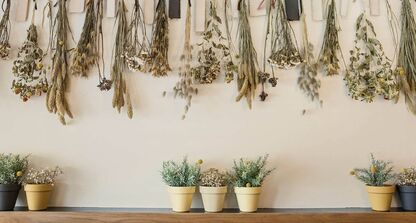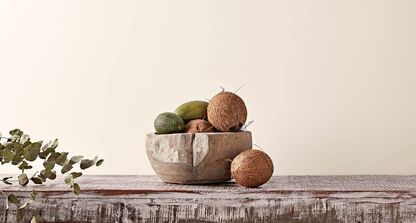How to Clean Tiles and Grout
Tiles are an enduringly popular interior design choice, adding style and practicality to just about any room.
They are especially popular in kitchens and bathrooms thanks to their water-resistant qualities, and they’re a durable choice for flooring throughout the home.
One of the popular selling points of tiles is that they are easy to clean. However, there are a few things that you need to know about how to clean tiles to make sure you keep them in great condition. Take a look at our handy guide for the best tips to make sure your tiles and grout are clean and hygienic.
Before you start
First things first, it’s important to know what type of tiles you have. Different materials have different needs, and the wrong tools, method or cleaning solution could damage your tiles.
It’s also a good idea to remove any dust and debris on the surface to avoid scratching the finish. For floor tiles, you can do this quickly and easily with a vacuum cleaner, and you can wipe down wall tiles with a dry microfibre cloth.
Tile cleaning tips
Whichever type of tile you’re cleaning, remember these important tips to avoid damage and ensure that your tiles stay looking as good as new for longer:
- Clean your tiles regularly to prevent build-up of grime, bacteria and germs. A regular cleaning schedule will also help to preserve your tiles and prevent damage.
- Avoid harsh cleaning solutions that contain ammonia, bleach or acids such as lemon juice or vinegar, as these can damage the surface of tiles and corrode grout.
- Use a rag or chamois mop for better cleaning and to prevent streaks. Sponge or string mops can push dirty water into the grout, causing staining and deterioration.
- Be careful not to use stiff-bristled or wire brushes, as these can scratch the surface of your tiles and damage grout.
- When in doubt, use a specialist tile cleaning solution designed for the material you’re cleaning.
How to clean ceramic tiles
Submerge your cloth or mop in warm water and wring out the excess before wiping the tiles with a gentle pressure. Every now and again, wring out the dirty water and resubmerge your cloth so you’re not just smearing dirt around.
For tougher grime build-up, add a gentle household detergent to your warm water to break down the dirt. Remember to avoid harsh or abrasive cleaners. You may notice a dull residue on the surface of your tiles after using a detergent. A non-abrasive cleaner and a clean cloth or mop can remove this and make your tiles sparkly and shiny again.
How to clean porcelain tiles
Porcelain tiles are highly water resistant, making them really easy to clean. However, harsh chemicals can damage the surface, leading to water ingress and damage. For porcelain tiles, it’s best to stick with warm water and elbow grease.
Submerge a clean mop or cloth in warm water, wring out the excess and wipe the surface of the tiles. Scrub a little harder on areas of stubborn dirt, or use a small amount of gentle detergent in your warm water. If you use detergent, make sure to go over these areas again with clean water to remove residue and avoid streaks.
How to clean polished tiles
Cleaning polished tiles is very similar to cleaning ceramic and porcelain tiles. Opt for warm water and use a little detergent or tile cleaner if you come up against tough stains. However, the important difference when cleaning polished tiles is ensuring that you dry and buff them afterwards.
As polished tiles have a shiny surface, any water that is left to pool on them presents a major slipping hazard. For floor tiles in particular, ensure that you dry the surface with a cloth to get rid of any excess water. Once your tiles are dry, use a clean, dry microfibre cloth to buff them in a circular motion to make them super shiny.
How to clean natural stone tiles
Natural stone is extremely durable but can be easily damaged if you don’t care for it properly.
Like the manmade materials above, harsh chemicals can damage and corrode your stone tiles. Always use stone-specific or pH-neutral cleaners for tough stains. Household detergents aren’t recommended for natural stone tiles.
Here are some additional tips for cleaning different types of stone tiles:
For marble tiles, steer clear of scouring pads and wire brushes, which can scratch the surface. Marble can be extremely smooth and slippery, so remember to dry your tiles after cleaning to prevent slips.
Never use detergent on granite tiles, as it can discolour the surface. For polished granite tiles, buff them as described above for polished tiles to ensure a shiny surface.
Slate tiles follow the same basic principles as the other natural stone tiles. For coated slate, make sure to dry your tiles with a microfibre towel or clean, dry mop straight away to prevent water spots.
Natural stone is extremely durable but can be easily damaged if you don’t care for it properly.
Like the manmade materials above, harsh chemicals can damage and corrode your stone tiles. Always use stone-specific or pH-neutral cleaners for tough stains. Household detergents aren’t recommended for natural stone tiles.
Here are some additional tips for cleaning different types of stone tiles:
For marble tiles, steer clear of scouring pads and wire brushes, which can scratch the surface. Marble can be extremely smooth and slippery, so remember to dry your tiles after cleaning to prevent slips.
Never use detergent on granite tiles, as it can discolour the surface. For polished granite tiles, buff them as described above for polished tiles to ensure a shiny surface.
Slate tiles follow the same basic principles as the other natural stone tiles. For coated slate, make sure to dry your tiles with a microfibre towel or clean, dry mop straight away to prevent water spots.
How to clean grout
No matter how careful you are, grout always seems to attract dirt, grime and mould. Even if your tiles are squeaky clean, dingy grout can make your walls and floors look dirty.
Use a specially designed grout cleaner and a nylon brush to scrub away at discoloured grout. Four tough stains, or larger areas that will take a long time to scrub, you can make a paste with a 1:2 solution of water and baking soda and apply it to the grout. Leave it to sit overnight before brushing it off and rinsing with clean, warm water. You can also use bleach on tough grout stains, but make sure to use it sparingly and rinse thoroughly to avoid corroding the tiles.
Steam cleaning is an effective way to restore dingy grout, but don’t use this method too often, as it can cause lasting damage. A gentle steam cleaning is fine for sealed grout that has been neglected and needs a bit of a pick-me-up. However, you shouldn’t steam clean damaged grout, as this can cause further deterioration.
Regular cleaning is the best way to keep your grout looking like new. You can even purchase grout sealants and anti-mould sprays to prevent water absorption and repel dirt. These coatings should be reapplied regularly to ensure their effectiveness.







